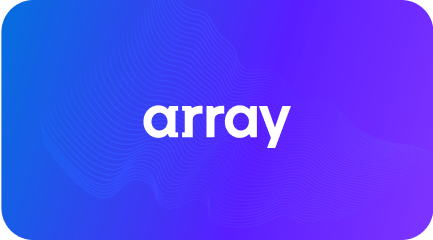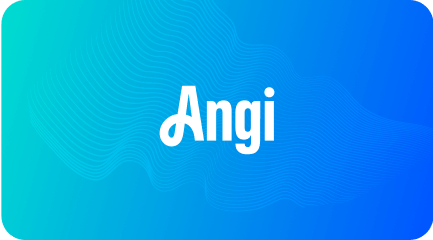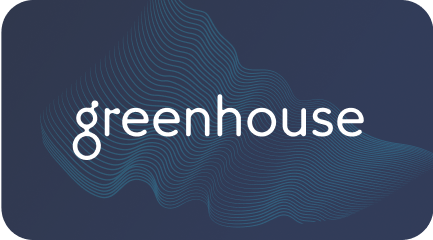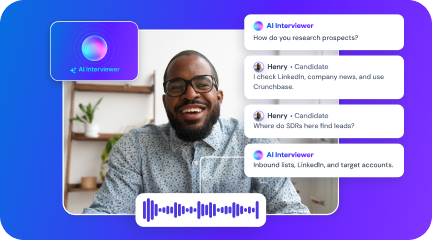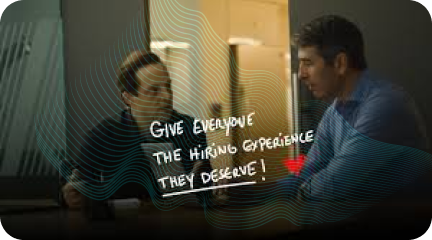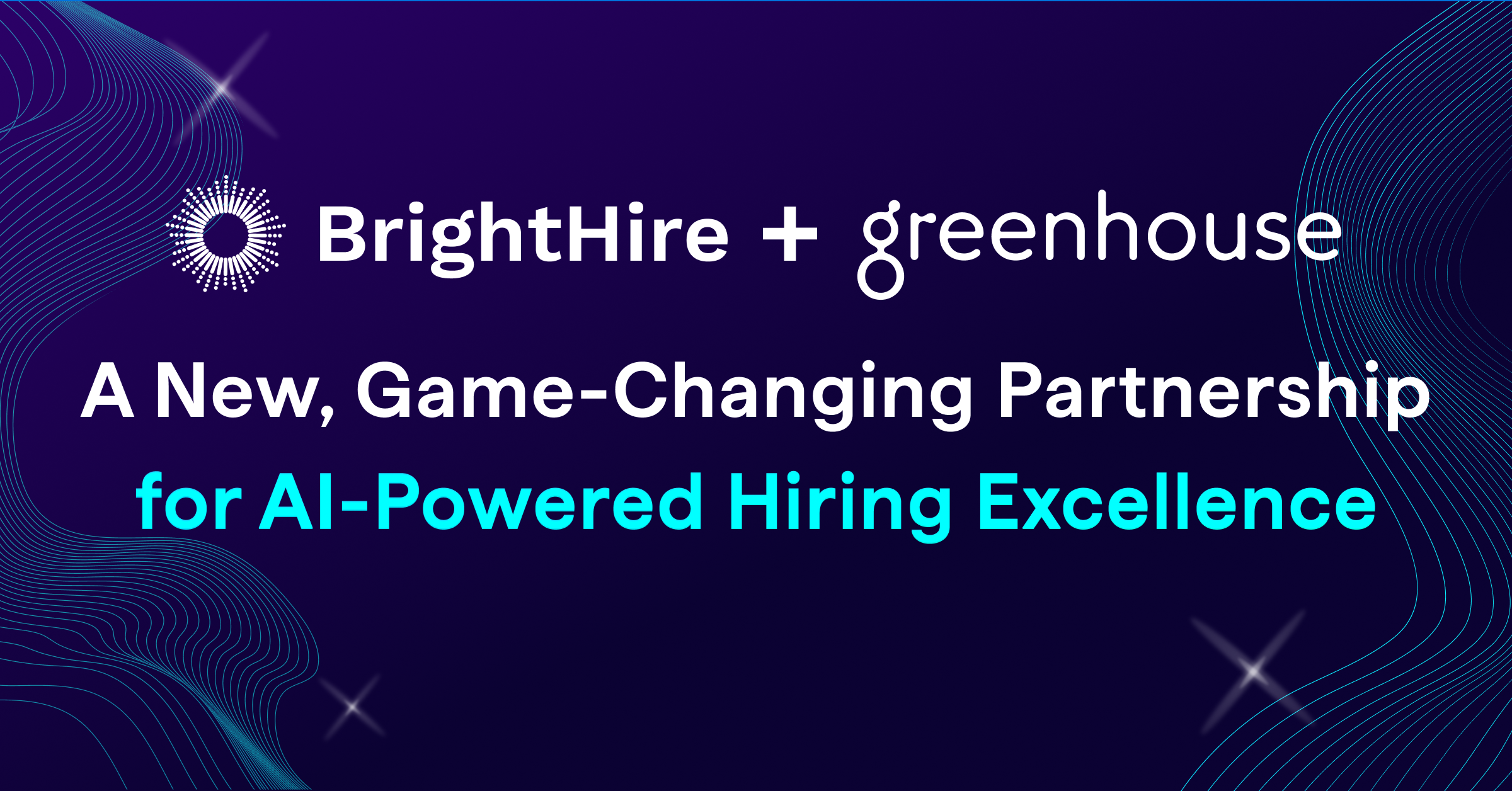“A company can recruit as hard as the day is long, but if their performance review process is unclear and unfair, if their policies do not support all employees’ ability to thrive, if their internal culture is exclusionary, their recruiting efforts are for naught,” says Danielle Little, Director, Process Change at Peoplism.
When it comes to fostering a diverse and inclusive corporate environment, the buck doesn’t stop at recruiting. That said, talent acquisition professionals play an enormous role in DEIB initiatives and have the potential to serve as a driving force for diversity, equity, inclusion, and belonging at their organizations.
That’s why we invited Danielle Little, Director of Process Change, and Joshua De Leon, Senior Consultant of DEIB, from the team over at Peoplism to the Shine community for an AMA session. The community of recruiters and talent acquisition professionals brought their questions, and Danielle and Josh delivered insights to help us all be better stewards of DEIB.
Read on for answers to questions about what candidates care about, how to craft a DEIB mission and strategy, and what metrics you should be tracking on your DEIB scorecard.
13 Questions & Answers to Your Most Critical DEIB Questions
Question 1
What do candidates care about when they say they want more diversity? Are they pining for a visual makeup that matches their expectations? Are they looking for core values rooted in embracing multiple perspectives?
Joshua says:
- What do candidates care about when they say they want more diversity?
- This is very important – wanting diversity means several things for candidates. Usually, they want to know that they have a path to succeed. Seeing leadership look like them means that someone with a similar background was able to get to that role.
- They also want to know that a company “walks the walk,” and while candidates rarely have access to deeper internal data, the staff page and leadership makeup is usually one of the only data points they have.
- Additionally, candidates often feel that diversity is table stakes. Meaning that if a company can’t deliver on representation, how can they also provide the equity, inclusion, and belonging that would make their workplace experience great?
- Are they pining for a visual makeup that matches their expectations?
- Short answer, yes. But the longer answer – it’s less about just visually that they see themselves represented. It’s more that experientially and structurally, the organization can deliver for them, with visual diversity being a litmus test for that.
- Are they looking for core values rooted in embracing multiple perspectives?
- Yes, and they are looking for core values that recognize the disparate impacts that different communities face. So it’s not just embracing a range of perspectives, but it’s also taking seriously how different identities, backgrounds, and privileges impact how someone is able to show up to work in the first place.
- For example, are you trying to send postings to HBCUs but don’t have a relationship with those universities, nor mentorship, sponsorship, and/or an ERG for Black and African American employees, nor representation at the leadership level for BIPOC executives? Then you may not have the structures or relationships needed to fully support an increasingly diverse workforce.
Question 2
There are different criteria for what companies categorize as diversity. Diversity in terms of race, color, and gender identities, but also diversity of thought and background. How do you think about defining diversity, and how can organizations think about a more holistic approach to diversity?
Danielle says:
We often talk through this with our clients. Our view is that diversity within a company has to include the identities that have been historically marginalized. That means diversity in terms of gender, race/ethnicity, disability status, and sexual orientation at least.
This is because these groups have been legally discriminated against and continue to face discrimination today. Diversity of thought is beneficial, but I would not consider that a part of DEIB.
I think a company can think holistically about their approach to diversity by:
- Thinking beyond recruiting and hiring beyond race and gender (namely, recruit more Black people and more cis-gender women).
- Using metrics to drive their work because it is not enough to say diversity is important. You have to track and measure the way you would any hiring outcome.
- Building an internal culture that can retain diverse talent and ensure they thrive.
Question 3
Many companies already have or are thinking about creating DE&I statements, practices, or pages to share with candidates externally. What are some essential inclusions that can’t be missed by companies in these statements? Also, how can companies stand out with these?
Joshua says:
From a legal compliance perspective, of course, you’ll need an EEOC statement. But there are plenty more best practices beyond that base requirement:
DEI Statements
If your organization doesn’t have this yet, then I recommend creating a process for gathering insight from across the organization when drafting it.
I wrote a DEI statement for a company I worked at before Peoplism, and here’s what we did:
- Reviewed all existing company values statements, mission and vision, and qualitative data around DEI and employee engagement and experience.
- Held a series of opt-in listening sessions around the organization, where we facilitated conversation and brainstorming about what mattered to people, what made folks feel valued, and what uniquely to our organization would make this statement feel personal rather than one-size-fits-all.
- Held a focus group with the C-suite as well.
- Created an initial draft with several reviews before finalizing and socializing across the organization.
Job Descriptions
We also recommend running a “decoder” or job description review to ensure there isn’t any inadvertently biased language in the job description. Textio is a good example of a vendor who can meet this need.
There’s a lot of research on how language can actually shape who decides to apply for the role and how job descriptions might inadvertently be mitigating diversity in the funnel.
DEI Pages
Many organizations aren’t here yet, but it’s a good goal to have one set up. Caveat: the company needs to have the infrastructure in place to actually have highlights to showcase on said page.
Before spinning up a DEI page, make sure you have:
- DEI statement
- DEI programs (e.g. ERGs or affinity groups, mentorship programs, etc.)
As you grow, you can add:
- Highlights from your most recent DEIB assessment (if you don’t have this, Peoplism can provide this service), so candidates know you are serious about long-term change
- Testimonials from current employees
- Blog posts, articles, etc. that highlight how your workplace and team champion diversity
Question 4
What are some common themes for organizations that get almost everything right from a holistic DEIB perspective?
Danielle says:
I would say the common themes at companies that are really moving the needle in terms of DEIB are:
- They have a holistic strategy. Meaning the initiatives they take on are connected to broader business goals. For example, a company invests in ERGs because they know underrepresented groups are struggling with inclusion and belonging.
- They do not just try to recruit a more diverse workforce. The hill I am willing to die on (hopefully no time soon) is that a company can recruit as hard as the day is long, but if their performance review process is unclear and unfair…if their policies do not support all employees’ ability to thrive…if their internal culture is exclusionary…their recruiting efforts are for naught.
- They measure measure measure. You would never recruit without having any metrics. Why do the same when it comes to DEIB?
Question 5
What’s the best approach for weaving DEIB into a company’s culture vs. solely as an initiative? Any companies/teams that you’ve seen do this exceptionally well? Also, how can leadership help drive this and show meaningful commitment to the wider company?
Joshua says:
- What is the best approach for weaving DEIB into a company’s culture vs. solely as an initiative?
- The first question you can ask is: who has “ownership” or responsibility over DEIB today? Is there no owner? Just TA? Does the CEO have a perspective?
- What often happens is that DEIB becomes, in practice, simply “D” – an entirely recruitment-focused diversity effort, and other functions abdicate responsibility or even interest.
- How do you solve this?
- An assessment is where we recommend companies start. You want to understand a baseline of how employees are feeling, how your structures and processes organization-wide match up to best practices, and to what extent different groups are having differential experiences.
- Then, you can build a roadmap, informed by that data, to launch programs and process changes across all of E, I, and B.
- Any companies/teams that you’ve seen do this exceptionally well?
- Yes! One of our clients, which we highlight often, is Everlaw. We’ve built multiple year-long action plans for DEIB programs, and what we’ve appreciated about them is that they are committed to a “full-court press” around DEIB.
- For example, Danielle Little led an entire performance management retooling process that rooted DEIB best practices in their new PM system. This is an example of baking DEIB into the very structure of the organization, touching all employees.
Question 6
What metrics or goals have you found most impactful in regard to hiring outcomes?
Danielle says:
Some important metrics are:
- Diversity of applicants.
- Pass through rates from the TA screen, disaggregated by race and gender at a minimum. Use additional measures if they are collected at the application stage.
- Pass through rates at the different hiring stages. These reflect on the hiring practices at the departmental/team level. This is a great metric because some of our clients have had strong recruitment efforts of candidates of color, for example, but massive drop-offs once they reach the first hiring manager interview. That’s a flag that the challenges around diversity were not because of the recruiting efforts or even so much qualifications since they passed the pre-screen on qualifications.
- Lastly, company diversity compared to industry benchmarks. This reflects overall on the company and leadership.
Question 7
What are some successful ways to capture whether or not DEIB programs and strategies are actually being realized and experienced by marginalized employees?
Danielle says:
Diversity
Diversity is all about recruiting and hiring practices at all levels. The main metrics tied to it are diversity of the company, departments, and leadership.
Equity
Equity is all about talent management and development. This can be measured in terms of larger outcomes, such as the promotion rates of employees from historically marginalized groups compared to majority groups. Or representation in levels of leadership (e.g., management, VP level, C-Suite)
Inclusion & Belonging
Inclusion and Belonging can be measured through pulse surveys. Companies that do these surveys already can include specific questions related to inclusion and belonging. Or, they can keep questions the same but disaggregating by identity (asked in a survey format) provides incredible insights into whether or not the efforts made are improving the experiences of marginalized employees.
Question 8
How important is it to have a dedicated DEIB leader, and how do you know when the time is right?
Joshua says:
First, here are some questions for companies:
- Is anyone accountable to DEIB right now? Is DEIB a current priority or just a notional one? If there have been no concrete efforts or intentionality behind DEIB to date, then whoever is writing the job description for that dedicated DEIB leader role is going to have their work cut out for them.
- Is there any baseline information about the DEIB health of the organization? Has a formal assessment, or even just a pulse survey, been implemented recently that gives you insights into how employees are experiencing the workplace?
- Does the company, or at least the leadership team, understand the case for DEIB? This includes the business case, although of course there are plenty of reasons for why DEIB is important.
I raise these questions because a dedicated DEIB leader (e.g., a Chief Diversity Officer, though some orgs start by having the DEIB lead be in the People Ops function at a manager/senior manager/or director role) can be incredibly impactful. But, we often see them be disempowered structurally from the get-go, such that they can’t be as impactful as they should be.
Usually, we recommend all companies invest in an assessment so that they know what their starting point is and where the biggest pain points are. This can happen alongside a DEIB leader if one exists at the organization or immediately prior (thus informing how the DEIB leader job description is constructed and what priorities they are briefed on when they enter).
Then, the company has to be willing to dedicate a budget to the DEIB role. Not just the salary but also the ability to implement programs.
Question 9
What should every interviewer know to make candidates feel considered and comfortable showing up as their best selves?
Joshua says:
Meet any accessibility needs.
First, make sure accessibility needs are met. If a candidate, say, uses a screen reader, then they should be able to indicate that as part of the process already, and then the interviewer should be able to accommodate that without negatively impacting their candidate evaluation.
Be transparent with candidates.
Second, transparent communication on the front end. While many companies don’t do this, Peoplism actually provides our interview questions in advance so that everyone (regardless of communication or processing style) can prepare in whatever way works best for them.
Even if you don’t do that, be clear on how long the interview will be, if there are any expectations (e.g., “answer as if you are presenting to an executive,” “be prepared to give specific and data-driven examples”) that they should have in mind.
Basically, making the implicit explicit so that candidates aren’t disadvantaged by misinterpreting or not preparing for an unsaid expectation. Check out this article to learn more about our process.
Ensure you’re including everyone.
Third, gender inclusivity. Have your pronouns on your screen or introduce them and ensure your interviewers have competency in gender pronouns and gender inclusivity.
Build a structured interview process.
Finally, you want to make sure there is a structured interview process, with a clear rubric and standard questions, so that candidates all have a fair and competencies-based shot at the job.
Question 10
Where should an organization start from a diversity employer branding standpoint, and how an organization shows up in BIPOC communities?
Danielle says:
I think a company that is working on its diversity but does not currently have a diverse workforce should be honest about that when they try to recruit. Candidates will see it and, if a company says they value diversity but has very little diversity to show for, then that seems disingenuous.
I also think demonstrating the commitment to diversity through your recruiting efforts, but also internal efforts (e.g., taking a holistic look at internal processes through an assessment) demonstrates a greater commitment. And that should be shared with candidates.
And one hundred percent being able to share authentically why diversity is important to you is so important. Is it about checking a box, or is it about creating the best company you can? That matters.
Question 11
Do people over-index on ERGs & the value they can bring?
Danielle says:
Too many companies rely on ERG leaders to do things they have no power, resources, or ability to do: to lead talent acquisition, talent management, and culture.
Question 12
When it comes to including people in visual and creative materials, how should companies think about visualizing a diverse company? Should that be representative of where they want to be?
Joshua says:
What is the implicit message that the branding is conveying? Future employees will be disillusioned by any “bait and switch” if the website is the paragon of visual diversity and the actual workforce is anything but.
Question 13
A lot of TA folks talk about diversifying your panel of interviewers, and that’s clearly very important to diversify thought when it comes to hiring decisions, as well as reducing bias. One thing I’ve heard is that it also helps encourage diverse candidates to join your company. How can we do that without running the risk of feeling like we’re tokenizing our BIPOC colleagues?
Danielle says:
If a company is not diverse and it’s over-relying on its few employees of color to “represent” diversity…then that is tokenizing.
I think some things a company can do are:
- Ask about workload or a desire to participate in these panels so it’s not becoming an undue burden on a few employees.
- Recognize that a diverse interview panel is only a part of the solution. Being able to speak to other efforts, such as strong internal processes and strong team dynamics, also helps.
Continue honing your recruiting skills & strategies.
That’s a wrap on our AMA with Danielle and Josh from Peoplism. If you’re looking for more answers to some of your most challenging recruiting questions, you’ve come to the right place.
The Shine community is the leading community for talent acquisition. Join us to connect with fellow TA professionals and recruiters, solve your hiring challenges, up-level your skills, and access exclusive member events.
